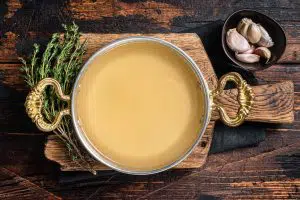One of the concepts I love about Chinese medicine is its focus on balance. Being in balance evokes a sense of inner peace. When you’re in balance emotionally and physically, you just know you can handle what ever comes your way. There’s a strong sense of “okay-ness” within yourself.
The practice of Traditional Chinese Medicine (TCM) is not just about acupuncture and herbs. There are many deep concepts within TCM. Finding health from a Western perspective, we often look at macro and micro nutrients like proteins, fats, carbohydrates, vitamins and minerals. TCM also has a dietary component, but its focus is less on nutrition as we know it and more about balancing our bodies based on our physical constitution and eating according to the seasons. After all, if you eat foods that are in season, it makes sense that eating those foods will better support our digestive processes. Another way to think about balancing for seasonal eating is to think about the weather outside. If you live in a cold climate, like we do in Michigan, winter time is cold. If it’s cold outside, we want warm inside. And I don’t just mean by heating our homes — we should also provide warm, nourishing food for inside our bodies.
Winter in TCM represents maximum Yin energy, which is dark, cold, quiet and introspective. It’s the opposite of summer, or Yang, energy, which is hot, outward, light and sociable. Winter is related to the kidneys, which are our root and most fundamental energy sources starting from conception to old age. Our longevity has a lot to do with the inherited kidney energy (Qi) from our parents, but then it’s up to us to take care of our kidney energy and to live as best we can in a way that keeps our bodies in balance. Acupuncture, herbs, diet and healthy movement all play roles in maintaining our emotional and physical balance.
In TCM, the body parts associated with the kidneys are the ears and the bones. I’m sure you’ve heard a lot lately about bone broth being the latest health food craze. The Chinese knew about the benefits of bone broth for centuries before it became a trendy food. If you think of cooking bones to nourish bones, it makes sense. The nutrients, marrow and collagen infused into the water help support the essence of our bones. Check out the recipe at the end of this article for my bone broth so you can make your own!
A basic guide to foods that are best for winter include those that grow best during the season: winter squash, green leafy vegetables, lettuce, potatoes, root vegetables, cabbage, celery, mushrooms, carrots, apples and pears. It’s best to eat cooked vegetables, especially with warming seasonings like cinnamon, ginger, nutmeg, clove, pepper, turmeric, garlic and onions. Most meats are warmer in nature and making stews and soups are a great way to nourish and warm our bodies. You can also add whole grains to the soups like quinoa, barley and brown rice. Other kidney energy-supporting foods include kidney (shape mirrors the kidney!) and black beans. Salt (iodized sea salt is good) should be used sparingly, as too much salt (sodium) can damage the kidney energy if over used for extended periods of time. Drinking sufficient water is also important to supporting the kidney Qi.
A good way to determine if you’re eating to support your constitution or health is to pay attention to how you feel after eating. Do you feel bloated, gassy or sluggish? Or do you feel energized and mentally sharp? Ultimately, if you listen, your body will guide you. As a dietitian and practitioner of TCM, I’ve always said there is no one way to eat. It all depends on your present state of health and constitution. Eating for the seasons is just one way to improve your digestive heath, which in turn allows for maximum absorption of the nutrients in the food, which then promotes greater health and well-being.
Queen of Quick Cooking Bone Broth
Ingredients:
- Onion- 1-2 medium (depends on size of pot)
- Garlic — 4 large cloves, chopped
- 5 lbs. or more chicken or beef bones — depends on size of pot (can get bones from meat department or butcher-you’ll have to ask)
- Carrots
- Salt
- Pepper
- Bullion for added flavor if you prefer
- Soup socks — put bones inside for ease of removal after cooking
In stock pot or large pot, sauté an onion until translucent. Add chopped garlic (or use from the jar) and sauté. Add water, carrots and seasonings. Bring to boil and add bones. Bring to boil again. Cover and simmer overnight. Remove soup socks and let soup cool. Can freeze in quart containers to use when needed. Can also use the bone broth as a base for vegetable or bean soups.
Note: for maximum flavor, the bones should take up about 1/3 to 1/2 of space in the pot.




Leave a Reply